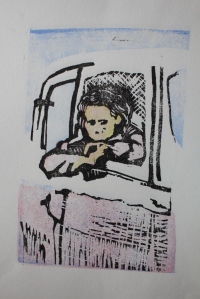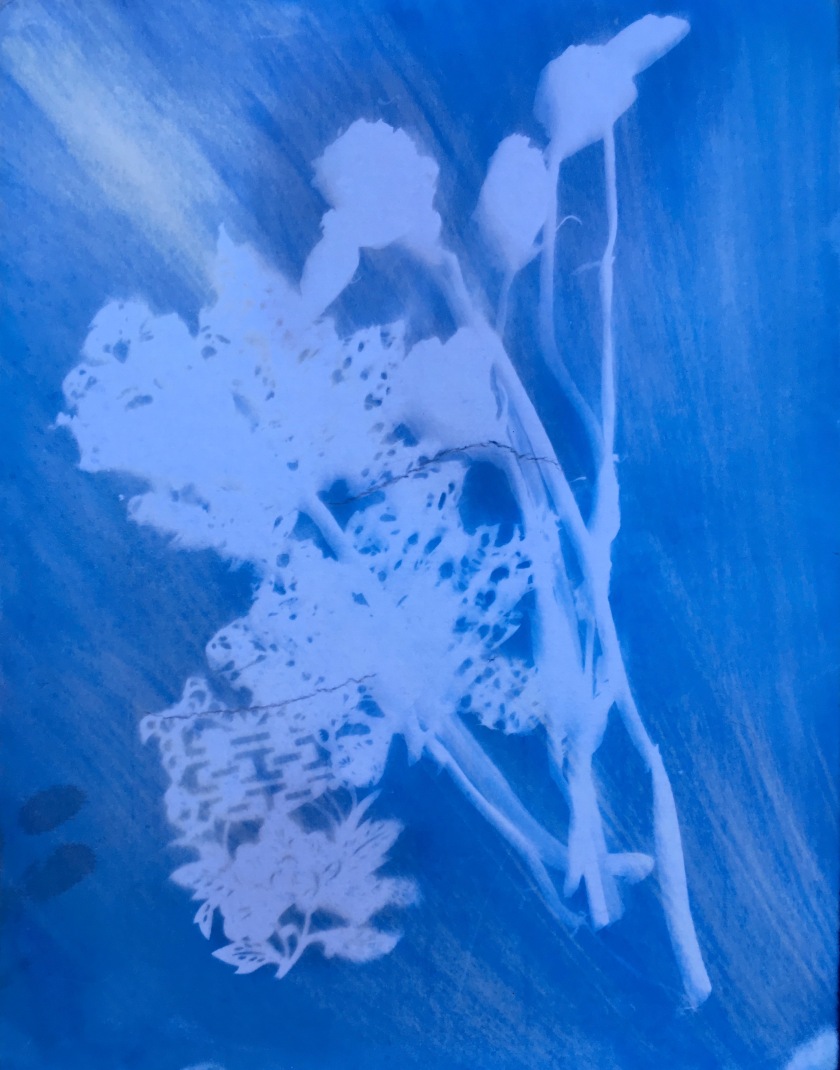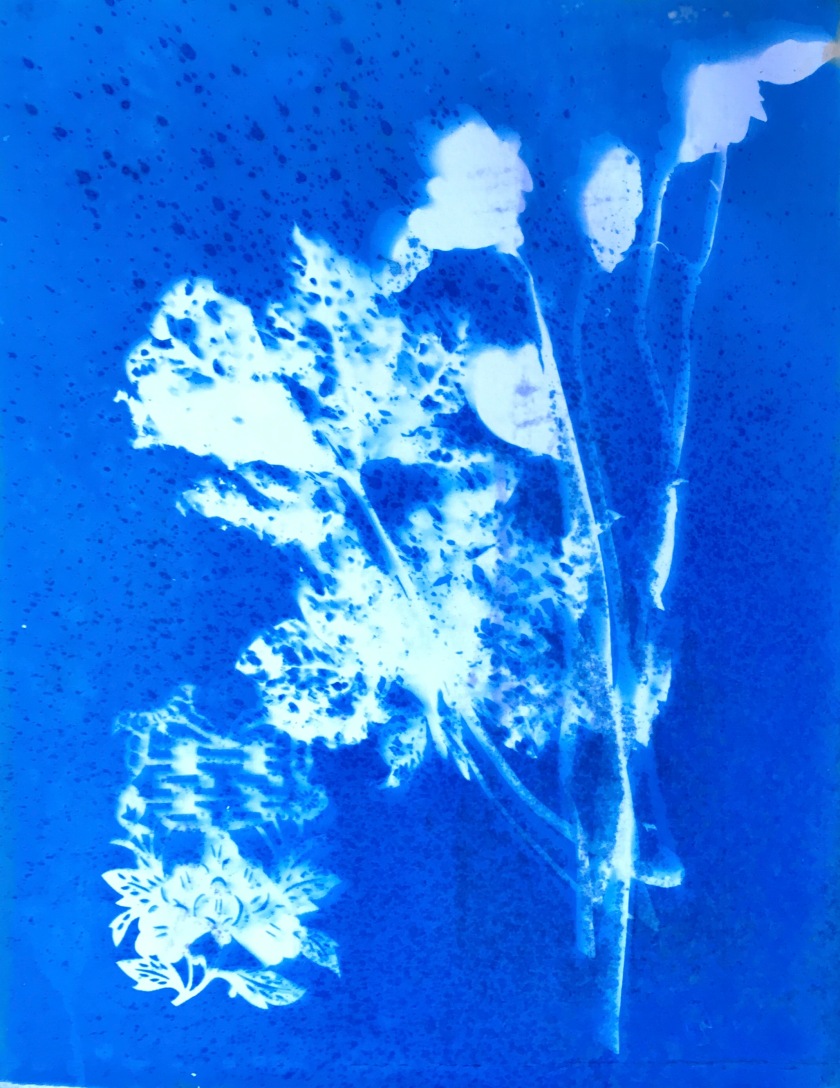Assignment 4 sketch
I’m now using my iPad to make sketches, more than paper, and I’m going to try to just upload some as videos.
Down the rabbit hole – sketchpad
My mother is in thrall to her calendar. It sits in front of her, a chequered page, numbered, white, red and black. She refers to it at all times. It’s her lodestone, and on a good day, she writes in it. One or two words, a struggle. Often just “Got up.” But her day can take a different turn, something not calendared.
I felt that her experience could be likened to Alice’s. Surreal. Free-flowing. So I was following that train of thought here.
The fact that one can link everyday experience to a cultural phenomenon such as Alice in Wonderland is interesting: is Alice derived from our everyday experience, or is our everyday experience enriched by Alice? Either way, the shift from specific to general is noteworthy.
Following on from the previous reflection, this sketch was exploring the relationship of my mother- distant in time and space- to my own lived experience, and finally acknowledging that I am exploring my mother’s situation as a metaphor for my own.
The work: Patchwork
This began with looking at pictures of my mother, and working with the ones that appealed to me. That’s a subjective judgement, but I decided to go with it, thinking that the reasons these images appealed would become clear later on.
The form of this piece is inspired by an evocative quote I read referring to Xu Bing’s Book from the Sky: “You are an empty pictogram without sound”, by the poet Bei Dao. It refers to the alphabet of 4000 pictograms, characters that look like Chinese characters but which cannot be read, that Xu Bing created for this installation. This piece is a set of related images of my mother that struggle to be read.
In this piece, the images are mostly highly comprehensible in the generic sense that they are all from a black and white photograph that depicts something recognisable. So in that sense, they are not “empty” pictograms. The context of their production is also able to be grasped, from clues about the setting, clothing, and historical and cultural knowledge. But in another sense they represent a visual language for which the code is lost.
The subject: A captured image- a stolen glance, one of those professional photographers who snapped people in the street without their permission then sold the images back. They are of a genre known as “walking photos”, and are mainly only of interest to the relatives of the people in the pictures, or as period pieces, giving information about historical setting, or fashion. Interesting phenomenon, rather hard to understand in the age of the selfie and the ubiquitous camera phone, but back then photos were relatively rare, and being snapped unaware when going about your day to day business quite an unusual thing. They are unusual because they are unposed, and capture a moment in the middle of a movement, usually walking down a street, with something else on your mind. In this one my mother is walking purposefully with a brown paper parcel in one hand. It’s just after the war I think, from the clothes. And I can recognize the setting as Union Street in Aberdeen.
The images making up this piece are multiples, all versions of the same original photograph. The cyanotype technique is a second photographic technique here overlaid on the first, so that this is a second layer of captured image.
The repetition of images is a bit reminiscent of the kind of multiples Andy Warhol created of celebrities, where that endless multiplication was probably a large part of the point of them. These types of photos are of ordinary people, otherwise unnoticed except by their acquaintances. They are easily lost to posterity. Without being reclaimed by those with a relationship to them, they become random images, meaningless pictograms, forever silenced.
The reproduction of a seemingly moving figure in a series reminds me of Eadward Muybridge’s work on reducing movement to a series of still images. It can suggest an old black and white movie. But there is no movement in the figure, only on the part of the viewer. Assuming a left to right, top to bottom reading, there is fading towards the end. There are ghosts, negatives, walking amongst the rest.
Here, visually, I’m interested in the patterns set up by juxtaposition: the contrasts, sometimes subtle, sometimes more overt, of colour (achieved by using different toners in development- vinegar, red wine, tea), clarity (different strengths of UV on different days/ times of day), effects of distortion (folding cloth, distancing the negative from the substrate) and staining with water and toner. There is an effect of degradation, loss of focus, lack of definition, and some more dramatic effects of apparent splitting or cracking open of the image. These effects can be a paradigm for the lenses through which we view things. Overall there’s a sense of loss, of transience.
Then there is the progress of the images, left to right, top to bottom. That the image remains is a coincidence of materials and process. The action of light on silver coated film, and then again the action of light on photosensitive, now again, the action of light on chemically treated fabric. The image of a moment comes down to us through this coincidence of materials and light and the fact of capture at a specific point in time. The image remains, but it is a material thing, and it is not permanent, so it is also the remains of the image. The final row of images show their fragility.
The images can be repeated but they cannot be recreated. There is no possibility of knowing more, of knowing what was in front, or what behind, or zooming in for more detail. This is a flat representation only. The negative is a reminder of the process, that the camera was seeing a different coded image. The reversal of plates a reminder of the lack of truthfulness of these images. They are patch worked, stitched together. We often talk of the fabric of time, of something that can be ripped, that is at the same time a mere cover.
More personally, these images replay the conversations with my mother now, as I try to recreate her past through pictures, so that she can find herself, somewhere on that fabric. Sometimes, just occasionally, there is a spark of recognition, a moment when the monochrome experience flickers into colour. (I’m going to experiment with adding colour.)
The images rehearse her experience with the world now. There is repetition, but it’s just a faint echo to her and she doesn’t notice. Her collection of the past is insecure. It could be this way or that, positive or negative, it might have been raining, it might have been sunny, who knows what was in the parcel, we never will.
All we surmise is that at some time a woman walked down a street carrying a parcel: that woman is somehow linked to the person sitting in front of me but she might as well have walked out of the frame because the picture is all that remains. The memory is gone. If personality is composed of memory, it’s gone. If a portrait is a composite of experience, this is a two dimensional image in front of me now, one with no past.
But as the viewer I can’t cope with that. I can’t let her become an empty pictogram without sound.
So what I’m doing, emotionally, is preserving a part of the code of these images, making them continue to have meaning for a little longer.
25 images, Cyanotype on cloth, stitched














